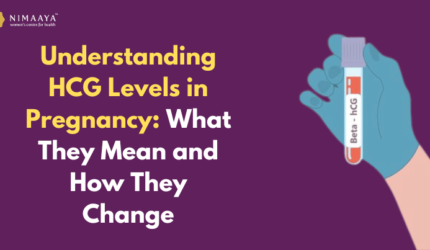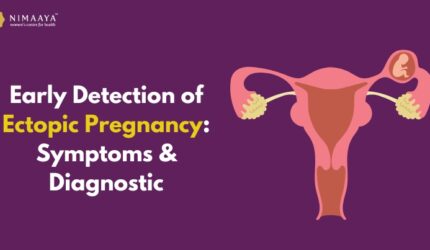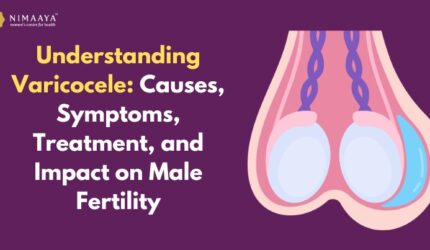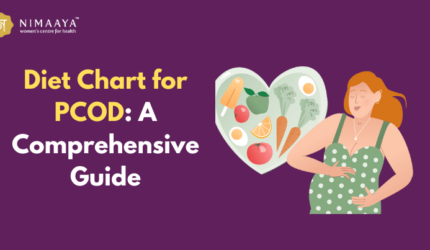Introduction
Miscarriage is a deeply distressing experience that affects many individuals and couples worldwide. Understanding the risk factors associated with miscarriage and recognizing its signs and symptoms are crucial steps in managing this challenging situation. In recent years, the development of miscarriage chance calculators has provided individuals with a tool to assess their likelihood of experiencing a miscarriage. In this article, we will delve into the factors influencing the risk of miscarriage, common symptoms, and the functionality of miscarriage chance calculators works as offering insights into their utility and limitations.
Overview of Miscarriage and its Prevalence
Miscarriage, defined as the loss of a pregnancy before the 20th week, is more common than many people realize. According to statistics, around 10-20% of known pregnancies end in miscarriage. However, the actual rate may be higher as many miscarriages occur before a woman even realizes she is pregnant. Despite its prevalence, miscarriage remains a topic shrouded in stigma and misunderstanding. Despite its prevalence, miscarriage remains a topic shrouded in stigma and misunderstanding, making it crucial to foster open dialogue and education surrounding this often overlooked aspect of reproductive health.
Factors or Causes Influencing Miscarriage Risk

Various factors contribute to the risk of miscarriage, including maternal age, genetic abnormalities, lifestyle choices, underlying health conditions, and environmental factors. Advanced maternal age, typically defined as 35 and older, is associated with a higher risk of miscarriage due to declining egg quality and increased chromosomal abnormalities. Additionally, chronic health conditions such as diabetes, thyroid disorders, and autoimmune diseases can impact pregnancy outcomes.
• Lifestyle Choices:
Certain lifestyle factors such as smoking, excessive alcohol consumption, drug use, and obesity can increase the risk of miscarriage. These habits can adversely affect overall health and reproductive function, leading to complications during pregnancy.
• Environmental Factors:
Exposure to environmental toxins, pollutants, chemicals, and radiation can pose risks to fetal development and increase the likelihood of miscarriage. Occupational hazards, pollution, and certain medications may contribute to adverse pregnancy outcomes and should be minimized or avoided whenever possible.
• Genetic Abnormalities:
Genetic factors play a significant role in miscarriage risk, including chromosomal abnormalities in the fetus. Genetic disorders such as Down syndrome, Turner syndrome, and others can result in developmental abnormalities incompatible with life, leading to miscarriage or stillbirth.
• Reproductive History:
Previous pregnancy complications, such as miscarriage, stillbirth, or preterm birth, can increase the risk of subsequent miscarriages. Understanding one’s reproductive history and addressing any underlying issues or risk factors can help improve pregnancy outcomes.
• Stress and Emotional Well-being:
While the exact relationship between stress and miscarriage is complex and not fully understood, chronic stress and emotional distress may contribute to pregnancy complications. Managing stress through relaxation techniques, therapy, and support networks can help promote emotional well-being and reduce the risk of miscarriage.
• Infections and Illnesses:
Certain infections, such as sexually transmitted infections (STIs), bacterial vaginosis, and urinary tract infections (UTIs), can increase the risk of miscarriage if left untreated. Additionally, maternal illnesses such as influenza, pneumonia, and certain viral infections may pose risks to fetal health and pregnancy outcomes.
• Uterine Abnormalities:
Structural abnormalities of the uterus, such as fibroids, polyps, septate uterus, or uterine adhesions, can impact implantation and fetal development, increasing the risk of miscarriage. Diagnostic tests such as hysteroscopy or ultrasound can identify these abnormalities and inform miscarriage treatment and Infertility Treatment options to optimize pregnancy outcomes.
• Hormonal Imbalances:
Hormonal imbalances, including thyroid disorders, polycystic ovary syndrome (PCOS), and luteal phase defects, can disrupt the menstrual cycle and impair fertility, increasing the risk of miscarriage. Proper management of hormonal imbalances through medication or lifestyle modifications can help support healthy pregnancies.
Understanding these factors or causes of miscarriage and seeking appropriate medical guidance from experts like Nimaaya IVF Center, can help individuals and couples navigate their reproductive journey with confidence and resilience, ultimately reducing the risk of miscarriage and improving the chances of a healthy pregnancy.
Common Signs and Symptoms of Miscarriage
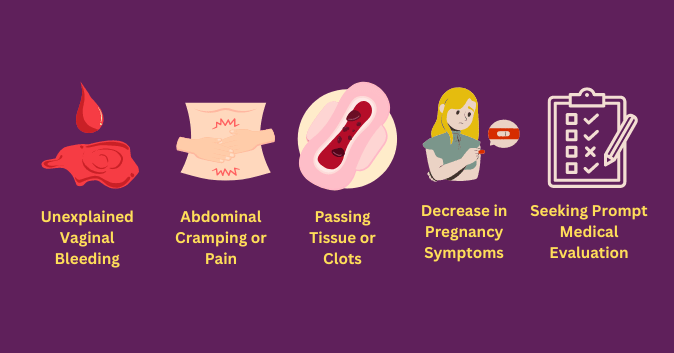
Recognizing the signs and symptoms of miscarriage is essential for prompt medical intervention and support. Early miscarriage symptoms may include vaginal bleeding, abdominal cramping or pain, passing tissue or clots from the vagina, and a sudden decrease in pregnancy symptoms such as nausea and breast tenderness. It’s important to note that not all cases of vaginal bleeding during pregnancy result in miscarriage bleeding, but any bleeding should be promptly evaluated by a healthcare professional.
❧ Unexplained Vaginal Bleeding:
Vaginal bleeding is one of the most prevalent indicators of a possible miscarriage. This bleeding can range from light spotting to heavy bleeding similar to a menstrual period. The color of the blood may vary, appearing bright red, brown, or pink. While light spotting may not always indicate a miscarriage, it’s crucial to monitor any bleeding and report it to your healthcare provider for evaluation.
Also Read: Vaginal Discharge
❧ Abdominal Cramping or Pain:
Many individuals experiencing a miscarriage may also report abdominal cramping or pain, which can range from mild to severe. This discomfort is often similar to menstrual cramps but may be more intense. Pay attention to the severity and duration of the pain and inform your healthcare provider if it becomes severe or persistent.
❧ Passing Tissue or Clots:
In some cases of miscarriage, individuals may pass tissue or clots from the vagina. This tissue may appear grayish or pinkish and may be accompanied by a sensation of pressure or fullness. Passing tissue or clots is often a sign that the miscarriage process is progressing, and medical evaluation is necessary to ensure proper management and support.
❧ Decrease in Pregnancy Symptoms:
A sudden decrease in pregnancy symptoms, such as nausea, breast tenderness, and fatigue, can also be indicative of a miscarriage. While it’s normal for pregnancy symptoms to fluctuate, a significant and sudden decrease in these symptoms may warrant further evaluation by a healthcare provider.
❧ Seeking Prompt Medical Evaluation:
It’s crucial to seek prompt medical evaluation if you experience any of these signs or miscarriage symptoms. While not all cases of bleeding or pain result in miscarriage, timely intervention and support are essential for ensuring the best possible outcomes for both the individual and the pregnancy. Your healthcare provider can perform diagnostic tests, such as ultrasound scans and blood tests, to assess pregnancy viability and provide appropriate care and support.
It’s important to remember that experiencing one or more of these symptoms does not necessarily mean you are having a miscarriage. Many individuals experience spotting or mild cramping during early pregnancy, which may not indicate any serious complications. However, any concerns or changes should be promptly reported to your healthcare provider for proper evaluation and guidance. Early intervention and support are crucial in managing potential miscarriages and ensuring the best possible outcome for you and your pregnancy.
Recognizing and responding to the signs and miscarriage symptoms promptly can help individuals and couples navigate this challenging experience with the support and guidance they need. Whether it’s seeking medical attention for bleeding or pain or reaching out to loved ones for emotional support, taking proactive steps can make a significant difference in coping with miscarriage and moving forward on the healing journey.
Coping Strategies and Support Resources for miscarriage
Coping with miscarriage can be challenging, and it’s essential to prioritize self-care and seek support from loved ones, healthcare providers, and support groups. Counseling, therapy, and support networks can provide emotional support, guidance, and validation for individuals navigating the grief and uncertainty of miscarriage. Additionally, resources such as online forums, books, and educational materials can offer valuable information and perspectives on coping strategies and healing.
Also Read: The Difference Between Vaginal Discharge, Arousal Fluid, and Cervical Mucus
Introduction to Miscarriage Chance Calculators

Miscarriage chance calculators are online tools designed to estimate an individual’s likelihood of experiencing a miscarriage based on various factors such as age, medical history, and lifestyle habits. These calculators utilize algorithms to generate a numerical percentage representing the risk of miscarriage within a given timeframe, typically the first trimester of pregnancy. While these calculators can provide valuable insight and reassurance for some individuals, it’s essential to approach their results with caution and consult with a healthcare professional for personalized guidance.
How Miscarriage Chance Calculators Work
Miscarriage chance calculators gather information from users regarding their age, medical history, reproductive health, and lifestyle factors. This data is then analyzed using statistical models and algorithms to calculate the individual’s risk of miscarriage. The results are presented as a percentage, indicating the likelihood of experiencing a miscarriage within a specified timeframe, such as the first trimester of pregnancy. By providing users with an estimate of their miscarriage risk, these calculators empower individuals to take proactive steps in their prenatal care and seek appropriate support and resources.
Limitations and Considerations When Using a Miscarriage Chance Calculator
While miscarriage chance calculators can provide valuable insights, it’s essential to approach their results with caution. miscarriage risk calculator rely on statistical probabilities and cannot predict individual outcomes with certainty. Additionally, they may not account for all possible risk factors or consider the complexity of each person’s unique circumstances. Therefore, it’s crucial to use these calculators as just one tool in conjunction with guidance from healthcare professionals.
Conclusion:-
Understanding the risk of miscarriage and recognizing its signs and symptoms are crucial steps in supporting reproductive health and well-being. Miscarriage chance calculator work offers individuals a tool to assess their likelihood of experiencing a miscarriage based on various factors, providing valuable insight and reassurance. However, it’s essential to approach calculator results cautiously, considering their limitations and consulting with a healthcare professional for personalized guidance and support. By empowering individuals with knowledge, resources, and support, we can navigate the challenges of miscarriage with resilience and compassion, fostering healing and hope for the future.



